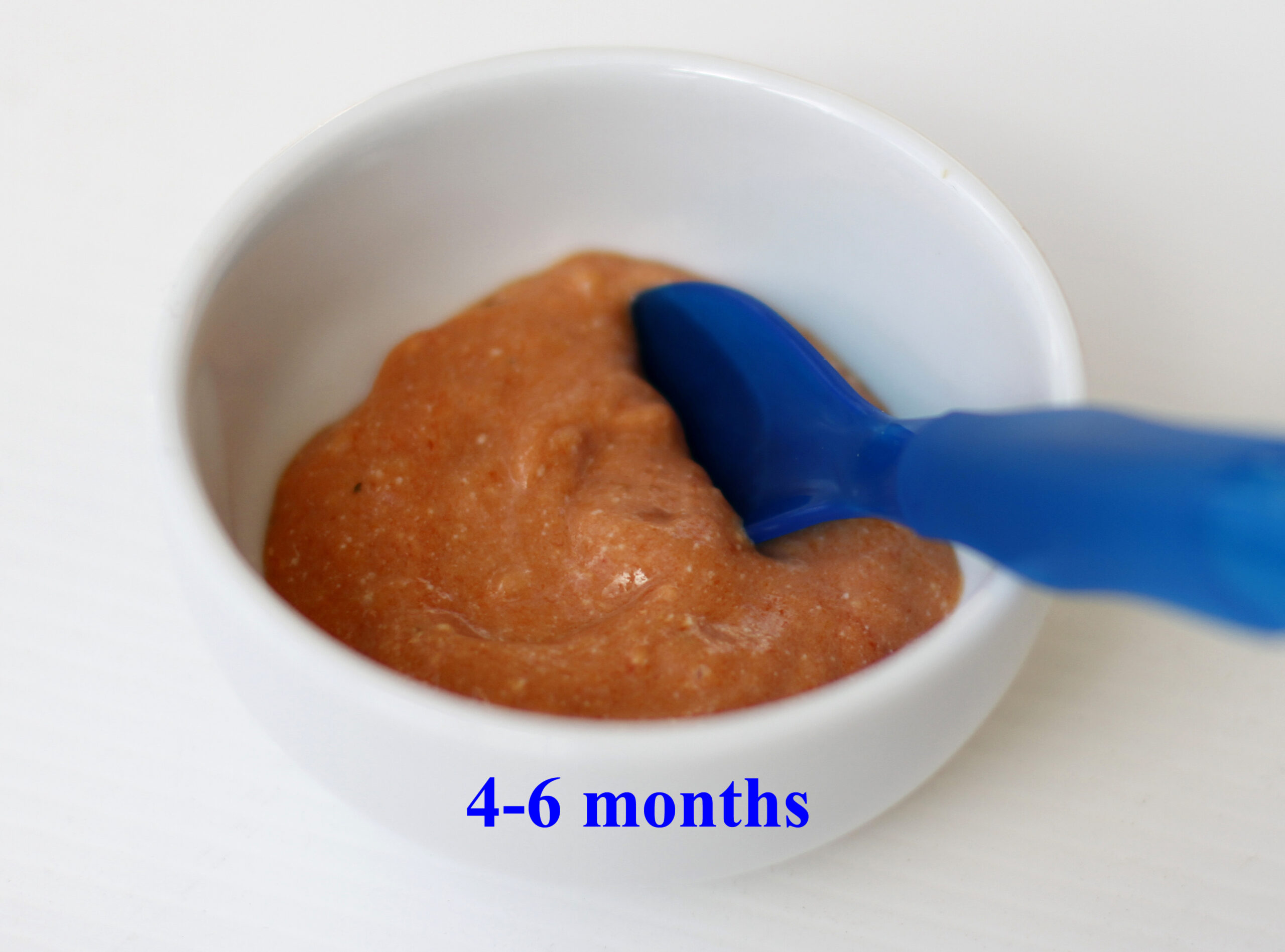
There is so much information online about starting your baby on solids which can make it very confusing and challenging to know where to start.
Step one is determining whether your baby is ready…
The World Health Organisation recommends starting solids by 6 months, but not before 4 months. Essentially, your child needs the following skills:
- Developing oral muscle strength, particularly no longer pushing food out with the tongue
- Good core strength. This means they can sit in a supportive highchair and hold up their own head.
- Showing an interest in food, e.g., opening their mouth when watching you eat or when a spoon approaches, leaning in to receive the food.
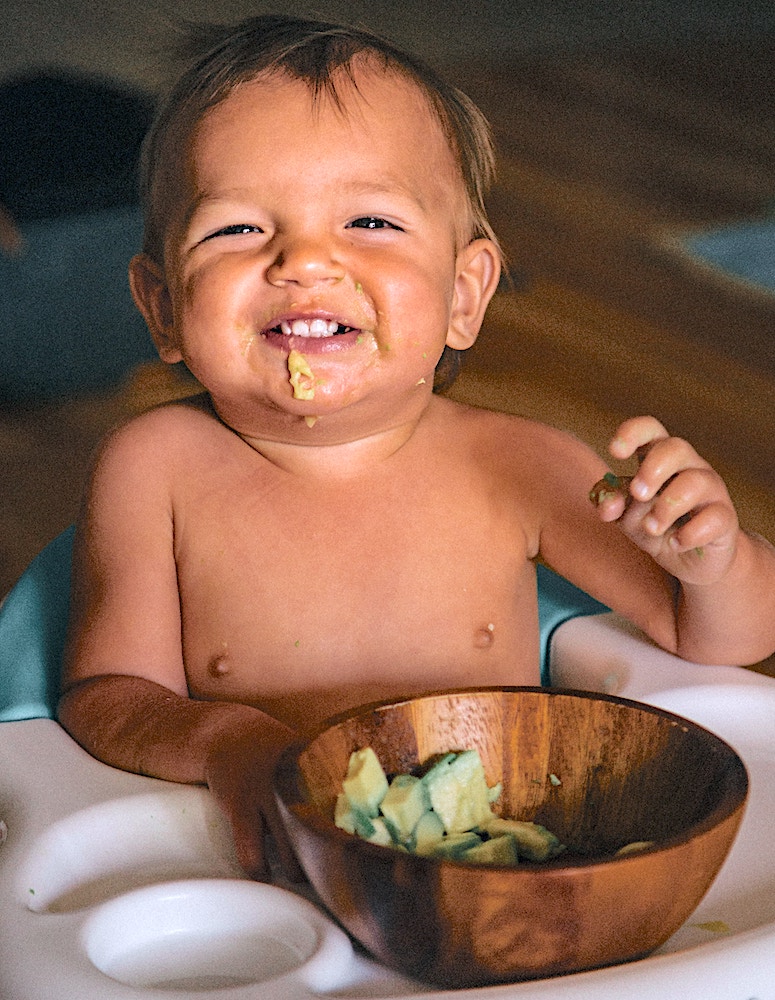
But once you have decided if your child is ready – what approach do you use?
There are two main methods of transitioning to solids with lots of online debate about which is best.
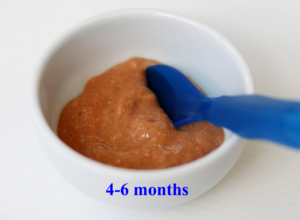
Parent-led weaning: this is the more traditional approach. Starting with smooth puree textures and grading up in difficulty.
Baby-led weaning: has become popular more recently (since 2008) and is essentially starting your baby with finger foods and table foods and encouraging them to self-feed from the beginning.
At Let’s Eat! Speech we see benefits to both approaches and we like to use a combination of the two – child-led weaning.
Today’s blog post will focus on parent-led weaning (stay tuned for our next blog with more detail on baby-led weaning):
The main point of difference is that parent-led weaning begins with purees. So why is puree so important? Feeding expert Melanie Potock emphasises in her books that learning to eat is a developmental process, just like learning to walk and talk. Purees are an important stage in that development.
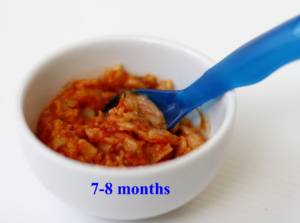
- When starting children on solids before 6 months of age, they must be offered puree only. Children do not yet have the necessary skills to manage finger foods until at least 6 months.
- Purees are also a great way of getting calories and volume in whilst your child works out tricky finger foods – a lot of which are going to end up on the floor and in your high chair in the beginning.
- and remember most of us still eat purees as adults, so we need these skills! – think yoghurt, custard or a thick gravy.
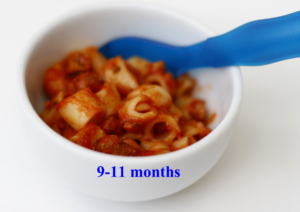
| Age | Texture | What order? |
| 4-6 months | Smooth puree | Puree 1-2 times AFTER a breast/bottle feed. |
| 7-8 months | Mashed/minced foods | 3 small meals AFTER a breast/bottle feed. Start offering bite dissolve and soft squish finger foods. |
| 9-11 months | Roughly mashed/finely chopped | 3 small meals BEFORE a breast/bottle feed. Continue offering soft easy chew finger foods including meat. |
| 12+ months | Roughly chopped family foods | 3 small meals and 2 snacks (if needed) BEFORE a breast/bottle feed. Continue to offer family foods eg toast pieces, fresh easy chew fruit and vegetable pieces and meat. |
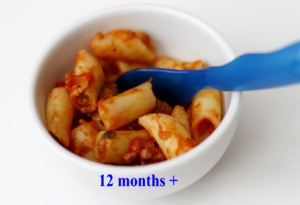
Top tips:
- Bring your child’s highchair to the table for meals or better yet consider a toddler friendly (baby insert) chair.
- Eat with your child, not after them. They learn what to do from watching you.
- Start with soft-squish finger foods in chip/stick shapes. These should squish easily between your thumb and forefinger with no pieces breaking off at 7 months of age and build the finger foods as they get older.
- Don’t forget bite-dissolve textures (e.g., baby mum mums). These are great as dippers with puree or with added spreads (e.g., cream cheese, avocado or peanut butter) for extra nutrition.
- Continue open cup feeding (even if it is messy) with water or milk (full fat milk as a drink is fine but it should not replace breast milk or formula until a child is over 12 months of age)
- Always supervise no matter which method you choose. Remember, choking is silent.
- Concerned about allergies? check out this ASCIA for the latest allergy information.
And what if your child continues to gag and struggle to transition to textured foods? Give us a call, it might just be fine tuning their textures to support their chewing skill development (all kids develop at a different pace). But by 12 months, they should definitely be starting to chew and manage textured foods.
Why is this sometimes hard for kids?
Your child’s tongue from 5-6 months of age is starting to move from a forward backwards suckling movement to a side ways movement and their jaw is developing the early munching and up-down chewing skills. Alongside gag desensitisation, there is a lot happening oral motor wise for these little bubs. So take it slowly and if you’re unsure where to go next or what to offer, check in with us and we can write an individualised feeding plan to support their oral motor development and feeding textures.
Looking forward to chatting all things baby led weaning with you in my next post,
Until next time
Ashleigh

About this Author
Ashleigh O’Loughlin is a Speech Pathologist with 6 years’ experience; she has specific experience in feeding difficulties and children with Autism Spectrum Disorders and Special needs. She has worked all around Australia including remote Northern Territory and Perth (Western Australia). She joined the Let’s Eat Speech Team in 2020 and works with Valerie Gent in their clinic in Wallsend (and now in Telehealth). You can email Ashleigh now on ashleigh@letseatspeech.com.au or head to the website www.letseatspeech.com.au
